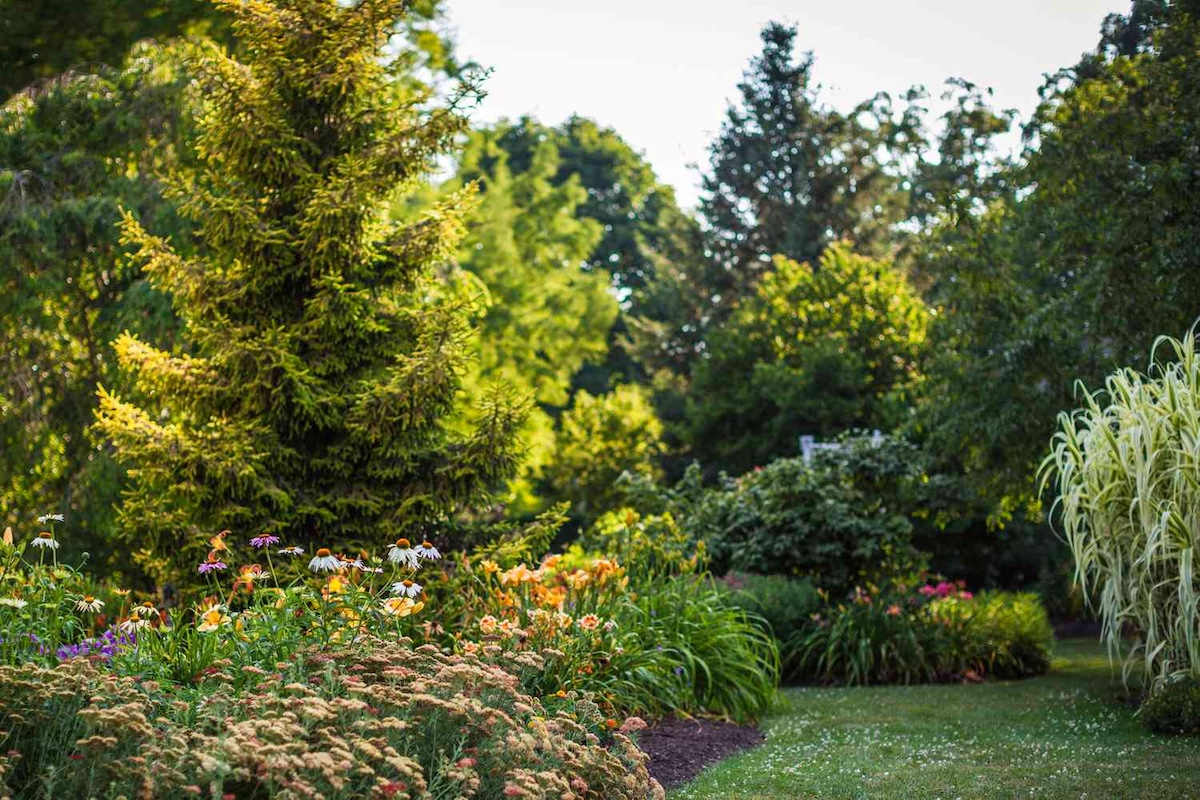Eco-Friendly Landscaping: Creating a Sustainable Garden with Trees
In today’s world, sustainability is a top priority, and landscaping is no exception. Eco-friendly landscaping not only helps reduce your environmental footprint but also promotes a healthier, more vibrant garden. Trees, as one of the most crucial elements in a landscape, play a key role in creating a sustainable and eco-conscious garden. They provide shade, support biodiversity, conserve water, and improve air quality. In this article, we’ll explore the benefits of incorporating trees into your garden, along with practical tips for creating a sustainable landscape that thrives year-round.
Why Choose Eco-Friendly Landscaping?
Before diving into the role trees play in eco-friendly landscaping, it’s important to understand why sustainable landscaping matters. Eco-friendly landscaping practices:
- Reduce Environmental Impact: Sustainable landscaping helps reduce waste, conserve water, and decrease the use of harmful chemicals and fertilizers.
- Conserve Resources: Using native plants and trees minimizes the need for excessive watering and maintenance, helping you conserve precious resources.
- Support Biodiversity: An eco-friendly garden supports local wildlife by providing habitat, food, and shelter.
- Mitigate Climate Change: Plants, especially trees, absorb carbon dioxide and produce oxygen, helping to reduce the effects of climate change.
By incorporating trees into your landscape, you not only create a beautiful and serene environment but also contribute to a healthier planet.
The Role of Trees in Eco-Friendly Landscaping
Trees offer numerous benefits when incorporated into sustainable gardens. Here are some key reasons why trees are essential for eco-friendly landscaping:
1. Reduce Energy Consumption
- Shade: Trees, especially deciduous trees, provide shade during the warmer months, helping to cool your home and reduce the need for air conditioning. This can lower your energy bills and reduce your carbon footprint.
- Windbreaks: Trees can also act as natural windbreaks during the colder months, helping to reduce heating costs by blocking cold winds and insulating your home.
- Strategic Placement: Planting trees in the right locations can maximize their energy-saving potential. For instance, deciduous trees planted on the south or west side of your home provide shade in summer while allowing sunlight in during the winter months once their leaves have fallen.
2. Conserve Water
- Water Retention: Trees, particularly those with deep roots, help improve soil structure and water retention. Their roots create channels in the soil that allow water to infiltrate deeper, reducing runoff and promoting healthier, more drought-resistant soil.
- Reduce the Need for Irrigation: Trees reduce evaporation by providing shade over lawns and garden beds. This can lower the need for frequent watering, saving water in the long run. Planting trees in strategic locations can even reduce the amount of water your garden needs during dry spells.
3. Support Local Wildlife
- Habitat Creation: Trees provide essential habitats for birds, insects, and other wildlife. Planting a mix of tree species can attract a variety of creatures, enriching the biodiversity of your garden.
- Food Sources: Many trees produce fruits, nuts, and seeds that provide a food source for wildlife, while also contributing to your garden's self-sufficiency if you choose fruit-bearing varieties.
4. Improve Air Quality
- Carbon Sequestration: Trees absorb carbon dioxide during photosynthesis and store it in their biomass. This process helps mitigate climate change by reducing the amount of greenhouse gases in the atmosphere.
- Oxygen Production: Trees are also natural oxygen producers, improving air quality and providing the oxygen we need to breathe.
- Filter Pollutants: Trees and other plants filter pollutants from the air, helping to purify the surrounding environment. They trap dust, particulate matter, and other pollutants, providing cleaner air for everyone.
How to Create a Sustainable Garden with Trees
Creating an eco-friendly garden with trees involves thoughtful planning, the right tree selection, and sustainable gardening practices. Here’s how you can build a sustainable, tree-centered garden:
1. Choose Native and Drought-Tolerant Tree Species
- Native Trees: Native trees are naturally adapted to your local climate and soil conditions, making them easier to care for and more resilient. They require less water and fertilizer, reducing the need for chemical inputs. Native species also support local wildlife, as they provide food and shelter for native insects, birds, and animals.
- Drought-Tolerant Trees: Look for trees that are drought-tolerant or low-water-use species. These trees can thrive with minimal irrigation once established, making them ideal for regions with water scarcity.
2. Plant Trees in the Right Locations
- Consider Sunlight and Shade Needs: When choosing tree locations, consider the amount of sunlight they require. Deciduous trees, for example, provide great summer shade but lose their leaves in winter to allow sunlight through. Evergreen trees, on the other hand, provide year-round coverage and wind protection.
- Avoid Overcrowding: Plant trees with enough space to grow to their full size. Overcrowding can lead to competition for nutrients and water, which can negatively impact the health of your trees.
3. Incorporate Trees into a Multilayered Garden Design
- Layering: Sustainable landscaping often involves a layered design, with trees, shrubs, and groundcovers working together. By planting trees as the upper canopy, you can create space for smaller plants that thrive in their shade.
- Groundcovers: Consider planting native groundcovers or grasses around trees to reduce weed growth, retain moisture, and enhance the beauty of the landscape.
- Composting: Using compost around trees and other plants helps improve soil quality and provide nutrients naturally. It also reduces the need for chemical fertilizers.
4. Practice Mulching and Reduce Lawn Areas
- Mulch: Apply a layer of organic mulch around the base of trees to retain moisture, suppress weeds, and provide essential nutrients as it decomposes. Mulch helps protect the tree’s roots and ensures better water retention.
- Reduce Lawn: Lawns require a significant amount of water, fertilizer, and maintenance. By replacing parts of your lawn with trees and native plantings, you can reduce water use and decrease your garden's carbon footprint.
5. Embrace Sustainable Tree Care
- Natural Pest Control: Use eco-friendly pest control methods such as introducing beneficial insects, neem oil, or organic insecticidal soaps to manage pests. Avoid harmful chemicals that can damage the ecosystem.
- Prune Properly: Regularly prune your trees to remove dead or diseased wood, and encourage healthy growth. Proper pruning helps prevent damage and allows the tree to grow more efficiently.
Green Your Garden with Trees
Eco-friendly landscaping is an excellent way to create a sustainable, healthy, and beautiful garden. By incorporating trees into your landscape, you not only enjoy their aesthetic and environmental benefits but also help reduce your environmental impact. From conserving water to supporting local wildlife and improving air quality, trees are an essential part of any sustainable garden. By choosing native, drought-tolerant species and using sustainable gardening practices, you can create a thriving garden that benefits both the planet and your local community.
Start planting trees today and make a lasting impact on the environment—one tree at a time!
Overgrown trees and messy shrubs can make your property look unkempt. Our Tree Trimming & Pruning services enhance the aesthetic and health of your trees while eliminating potential hazards. Timber TEKS ensures proper tree pruning techniques that promote strong and beautiful growth. Contact us today to keep your trees in perfect shape!

























